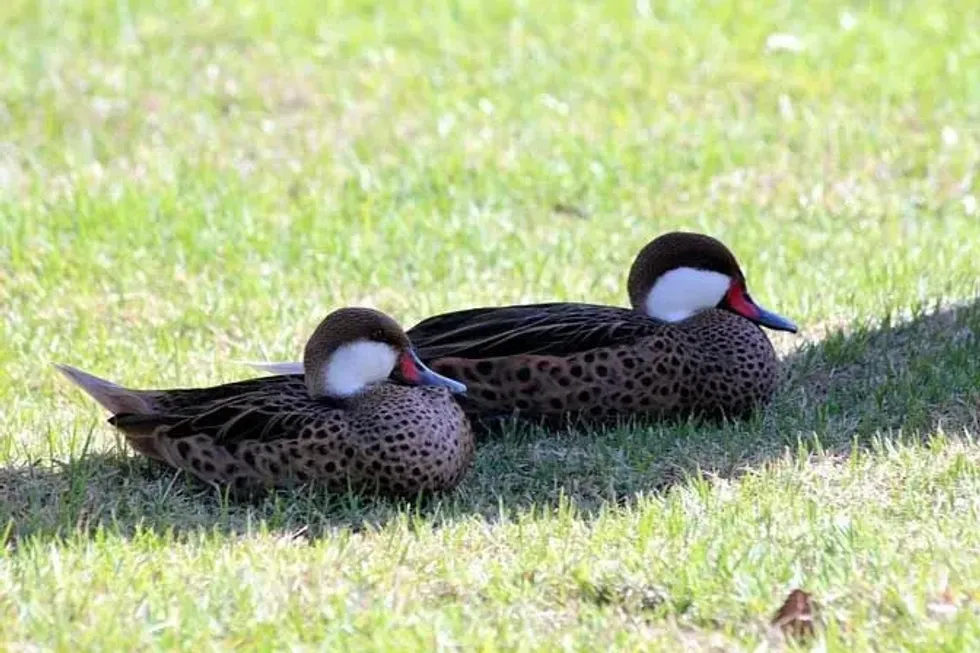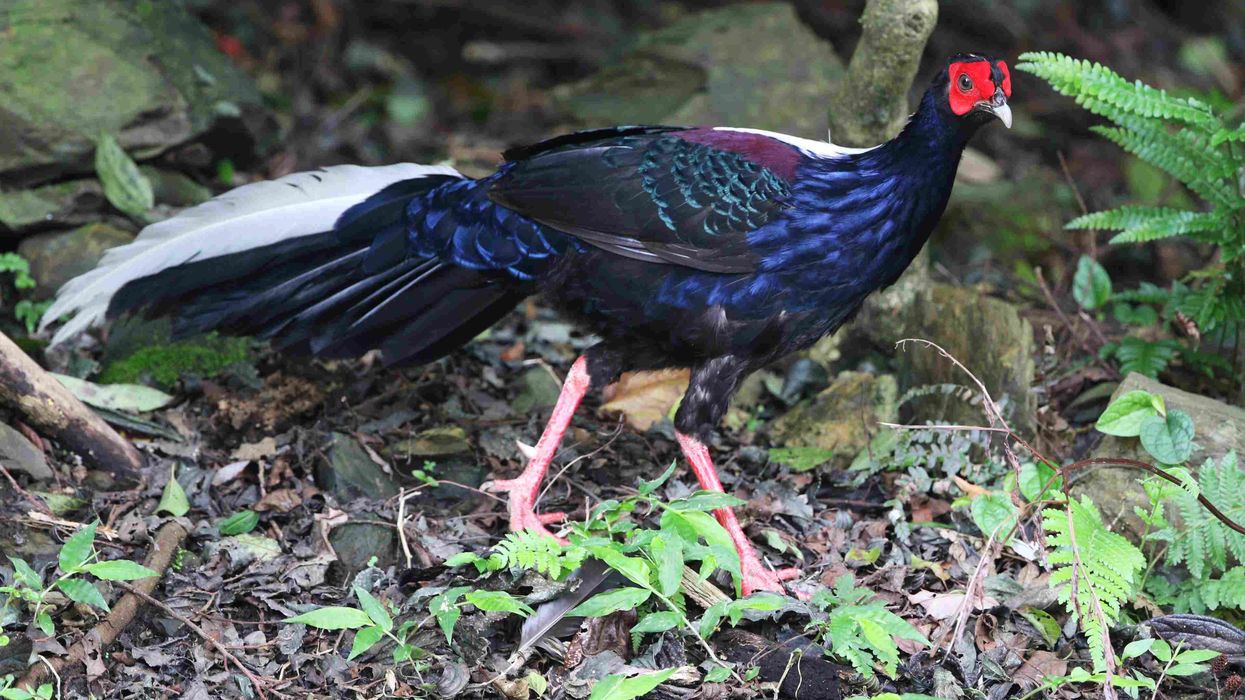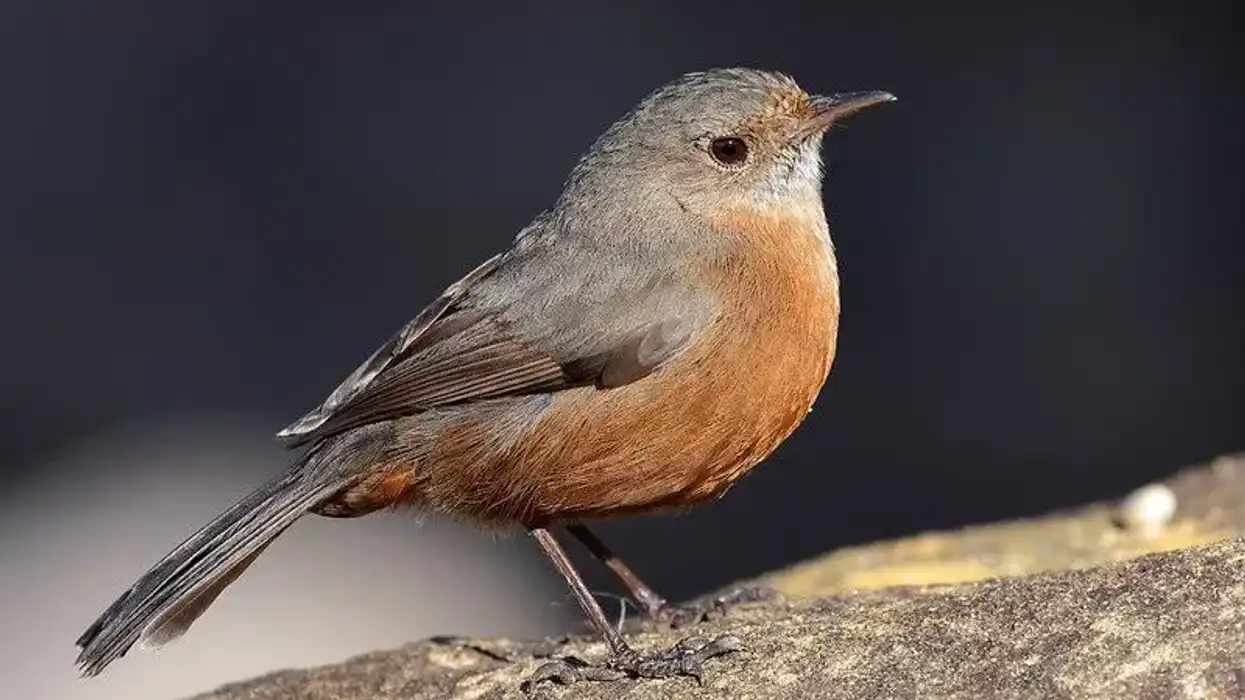The white-cheeked pintail (Anas bahamensis) is a species of dabbling duck. They are like the other southern ducks, which look similar.
They are mostly brown in color and have white cheeks and a bill that is gray and red-based. The white-cheeked pintail (Anas bahamensis) feeds on the aquatic plants and other small creatures that they obtain with the help of dabbling.
White-cheeked pintails are recognizable because of the white spot that is there on their cheeks. There are three subspecies of this duck species known as Lesser Bahama pintail (A. b. bahamensis), greater Bahama pintail (A. b. rubirostris), Galápagos pintail (A. b. galapagensis).
The white-cheeked pintail (Anas bahamensis) is an endemic subspecies that is restricted primarily to Galapagos Islands. Here are some of the most interesting facts about the white-cheeked pintail species that you must read. Afterward, do check our other articles on peregrine falcon facts and skylark facts as well.
White Cheeked Pintail Interesting Facts
What type of animal is a white-cheeked pintail?
The white-cheeked pintail is a type of duck that is small in size and is mostly found in brackish waters. These ducks are known to live for a short period of time depending on different factors which determine the lifespan of these birds. This duck belongs to the bird family Anatidae, which has around 164 species.
What class of animal does a white-cheeked pintail belong to?
White-cheeked pintails belong to the class of birds. White-cheeked pintails are widely spread in the Caribbean and South America, and they also wander sometimes to Florida, mainly during the season of winter.
How many white-cheeked pintails are there in the world?
There is no particular and exact number as to how many white-cheeked pintails are there in the Caribbean, South America, and Galapagos Islands; the number varies according to the different factors which determine the number of white-cheeked pintails. In Puerto Rico and the Virgin Islands, white-cheeked pintails are listed as species that require conservation efforts.
Where does a white-cheeked pintail live?
White-cheeked pintails are found in the Caribbean islands, South America and Galapagos Islands. These ducks prefer to live on the waters with a degree of salinity, which are brackish lakes, estuaries, and also mangrove swamps.
What is a white-cheeked pintail habitat?
The white-cheeked pintail’s habitat includes waters with a degree of salinity, that is, brackish lakes, estuaries, and also mangrove swamps. These dabbling ducks are found in the salt waters, which includes ponds, lagoons, lakes, mangroves, and they are also found sometimes in the shallow freshwater ponds of the Galapagos Islands.
Who do white-cheeked pintails live with?
White-cheeked pintails usually prefer to live alone or in pairs, or also in a small group of 10 - 12 birds across Galapagos Islands. White-cheeked pintails are also seen in larger flocks which are up to 100 birds and also more.
White-cheeked pintails then form pairs after the post-breeding molt. The nest of this duck species can be found on the ground near a clump of vegetation.
How long does a white-cheeked pintail live?
The maximum lifespan of a white-cheeked pintail is believed to be 32 years in their natural habitats. There are different factors such as habitat loss, climate changes, which determine the lifespan of these dabbling ducks.
How do they reproduce?
White-cheeked pintails remain monogamous during the season of breeding. The male white-cheeked pintails then also try to breed with the other female white-cheeked pintails which are close to them.
If in case the female has already mated with the other male, then she resists the advances. Once the breeding process between the male and female white-cheeked pintails is completed, the females lay between 6-10 eggs in the nest.
The nest is present along the ground under vegetation. Whose incubation period lasts for up to 26 days, after which the young ducklings are born.
What is their conservation status?
The conservation status of these birds is of least concern as listed in the IUCN Red List. But the population of white-cheeked pintails is declining in certain regions of their habitats. The Migratory Bird Treaty Acts list them as a protected bird species, and it is illegal to sell the birds without a special permit.
White Cheeked Pintail Fun Facts
What do white-cheeked pintails look like?
Like the other southern ducks, the sexes of the ducks are similar. White-cheeked pintails are mainly brown with cheeks that are white in color, and the bill is gray and red-based.
They are medium in size, and the color is the same for the male and the female. The throat and the tail are always contrasting with their brown body.
How cute are they?
White-cheeked pintails are cute in their appearance as they look somewhat similar to the species of ducks. These aquatic animals are medium in size, and their color is similar to that of the other southern ducks. Therefore, white-cheeked pintails are cute in their appearance.
How do they communicate?
White-cheeked pintails use vocalization when they communicate with each other. Males communicate with the help of whistles, while females communicate with the help of a low quack sound of four to eight syllables. These ducks vocalize when they are mating.
How big is a white-cheeked pintail?
White-cheeked pintails are medium in size as compared to the other species. Their range of size is 17-20 in (38-50 cm), and the wingspan is 21.6-25.5 in (55-65 cm).
How fast can a white-cheeked pintail fly?
The average speed of this duck species while migrating from its habitat near lakes to the wintering grounds is 48 mph (77.2 kph). This bird species usually tends to fly even faster with rapid wing beats when they see a predator approaching them.
How much does a white-cheeked pintail weigh?
White-cheeked pintails weigh around 1.10 lb (0.5 kg). They're 20 times lighter than the trumpeter swan.
What are the male and female names of the species?
The male species of white-cheeked pintails are called drakes, and the female species of white-cheeked pintails are known as hens. The male and the female come together only during the time of their mating in the Galapagos Islands.
What would you call a baby white-cheeked pintail?
The baby white-cheeked pintails are called ducklings. These young animals get sexually matured approximately one to two years after being born.
What do they eat?
White-cheeked pintails are omnivores in terms of their food habits. This duck species usually feeds on aquatic plants and also small creatures, which they obtain with the help of the dabbling process.
They also eat nutritious widgeon grass and plants. They are usually found feeding on the ground near vegetation and water. The process by which they grab their food in water as well as on the ground is known as dabbling.
Yellow-crowned herons, white land crabs, laughing gulls, and rats are known predators of this pintail. There have been cases of the American bullfrog feeding on the ducklings.
Are they dangerous?
White-cheeked pintails are not dangerous to human beings. Rather, human beings hunt white-cheeked pintails along with geese and swans in America during the hunting season. Therefore, white-cheeked pintails pose no danger to humans.
Would they make a good pet?
No, you cannot pet a white-cheeked pintail as it is illegal to own a white-cheeked pintail as these birds are protected by the Migratory Bird Treaty Acts. It is also illegal to sell white-cheeked pintails without a special permit.
Did you know...
The overall population of white-cheeked pintails is said to feature around 10,000 individuals. The population of white-cheeked pintails is said to be decreasing, and therefore, they are protected under special laws.
The female white-cheeked pintails are slightly duller in color and have a bill that is light in color as compared to males.
What are other common names for white-cheeked pintail?
The other common names for white-cheeked pintails are Anas bahamensis, Bahama pintail, or summer duck.
Is white-cheeked pintail a duck?
Yes, white-cheeked pintails are dabbling ducks that have a gray-blue bill and also a red spot at their base. Their size and appearance are similar to that of the ducks Therefore, white-cheeked pintails are a duck species.
Here at Kidadl, we have carefully created lots of interesting family-friendly animal facts for everyone to discover! For more relatable content, check out these bean goose facts and cock-of-the-rock facts pages.
You can even occupy yourself at home by coloring in one of our free printable white-cheeked pintail coloring pages.









